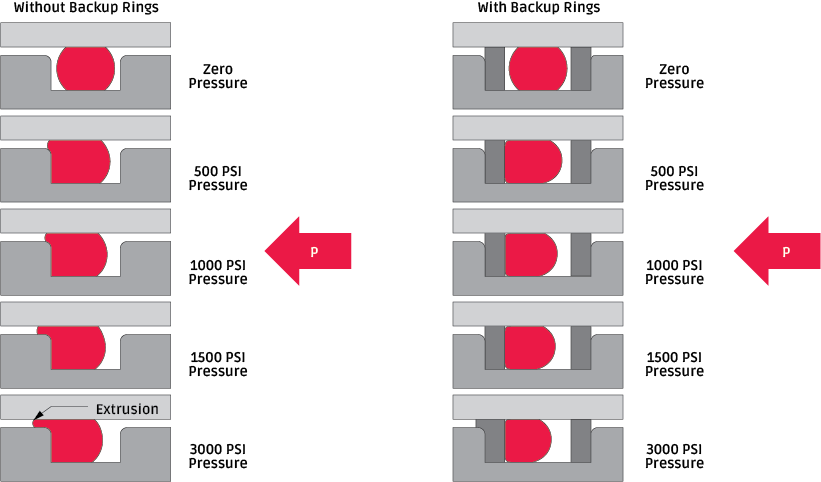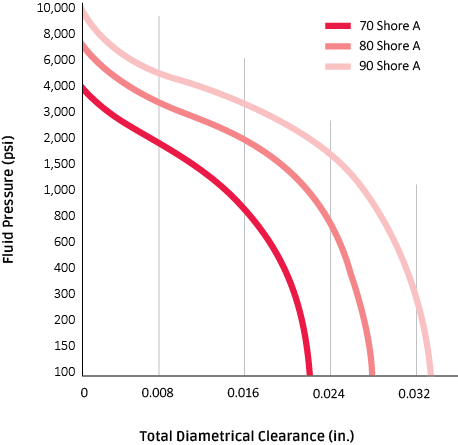Differential pressure affects an o-ring by forcing it to the low pressure side of the gland, causing the cross section to distort (See Illustration 5.1 below). This motion blocks the diametrical clearance gap between the mating surfaces and forms a seal. If the o-ring cannot resist increasingly high pressure, part of the o-ring will be forced (extruded) into the diametrical gap. This condition leads to premature failure, leakage and system contamination. O-Rings operate optimally within a certain range of pressure. Differential pressure does aid in sealing potential by compensating for the elastomer's tendency to assume a compression set over time, which reduces o-ring compression and utility.
Methods commonly used to prevent o-ring extrusion under pressure include:
- Increasing the o-ring hardness (durometer) (See Illustration 5.2 below)
- The use of back-up rings to block the diametrical clearance gap and provide support for the o-ring
- Reducing the diametrical clearance gap dimension
- Lowering of system pressure
Illustrations

Effect of Pressure

Extrusion Limit